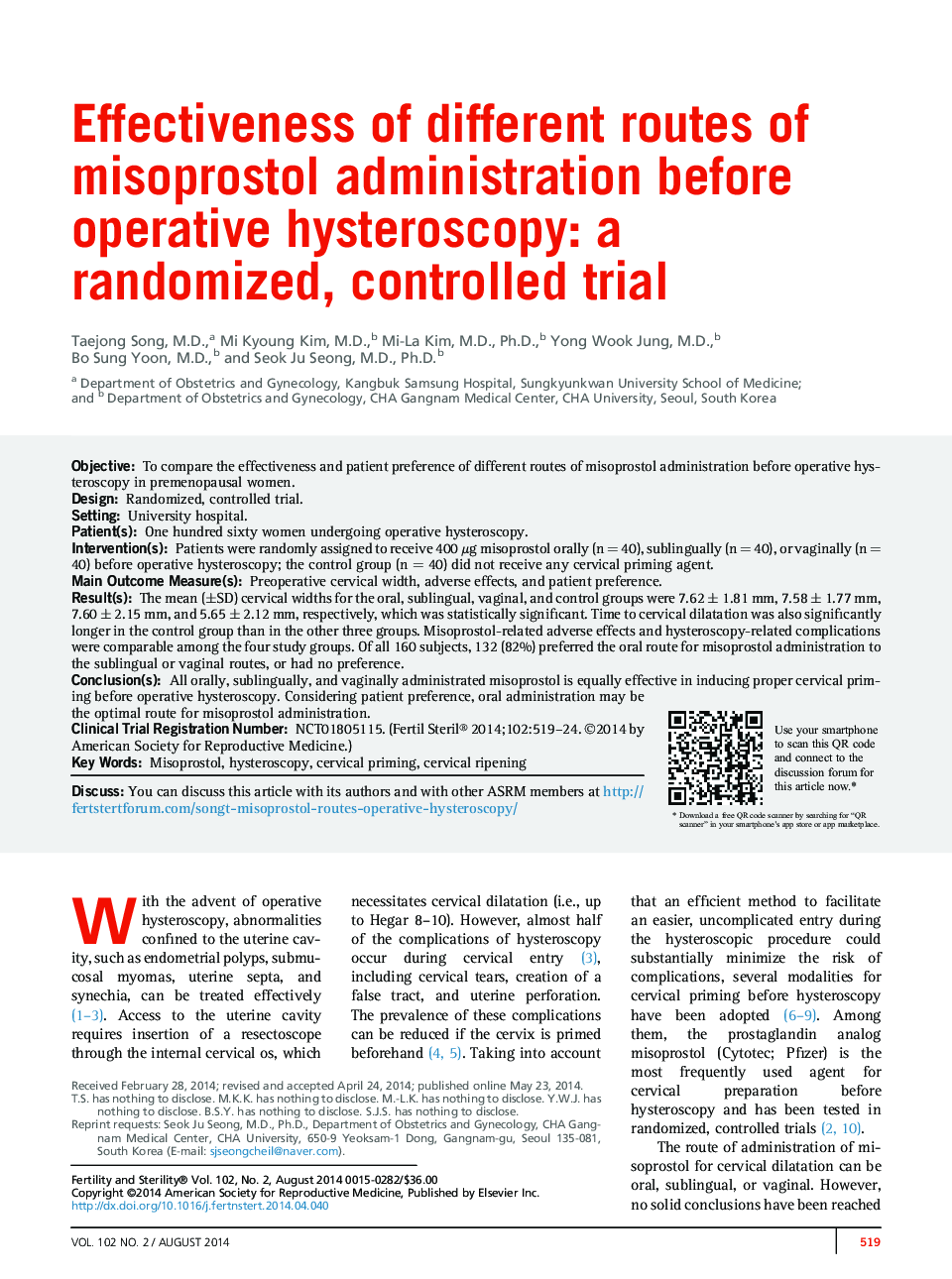| Article ID | Journal | Published Year | Pages | File Type |
|---|---|---|---|---|
| 6181738 | Fertility and Sterility | 2014 | 6 Pages |
ObjectiveTo compare the effectiveness and patient preference of different routes of misoprostol administration before operative hysteroscopy in premenopausal women.DesignRandomized, controlled trial.SettingUniversity hospital.Patient(s)One hundred sixty women undergoing operative hysteroscopy.Intervention(s)Patients were randomly assigned to receive 400 μg misoprostol orally (n = 40), sublingually (n = 40), or vaginally (n = 40) before operative hysteroscopy; the control group (n = 40) did not receive any cervical priming agent.Main Outcome Measure(s)Preoperative cervical width, adverse effects, and patient preference.Result(s)The mean (±SD) cervical widths for the oral, sublingual, vaginal, and control groups were 7.62 ± 1.81 mm, 7.58 ± 1.77 mm, 7.60 ± 2.15 mm, and 5.65 ± 2.12 mm, respectively, which was statistically significant. Time to cervical dilatation was also significantly longer in the control group than in the other three groups. Misoprostol-related adverse effects and hysteroscopy-related complications were comparable among the four study groups. Of all 160 subjects, 132 (82%) preferred the oral route for misoprostol administration to the sublingual or vaginal routes, or had no preference.Conclusion(s)All orally, sublingually, and vaginally administrated misoprostol is equally effective in inducing proper cervical priming before operative hysteroscopy. Considering patient preference, oral administration may be the optimal route for misoprostol administration.Clinical Trial Registration NumberNCT01805115.
